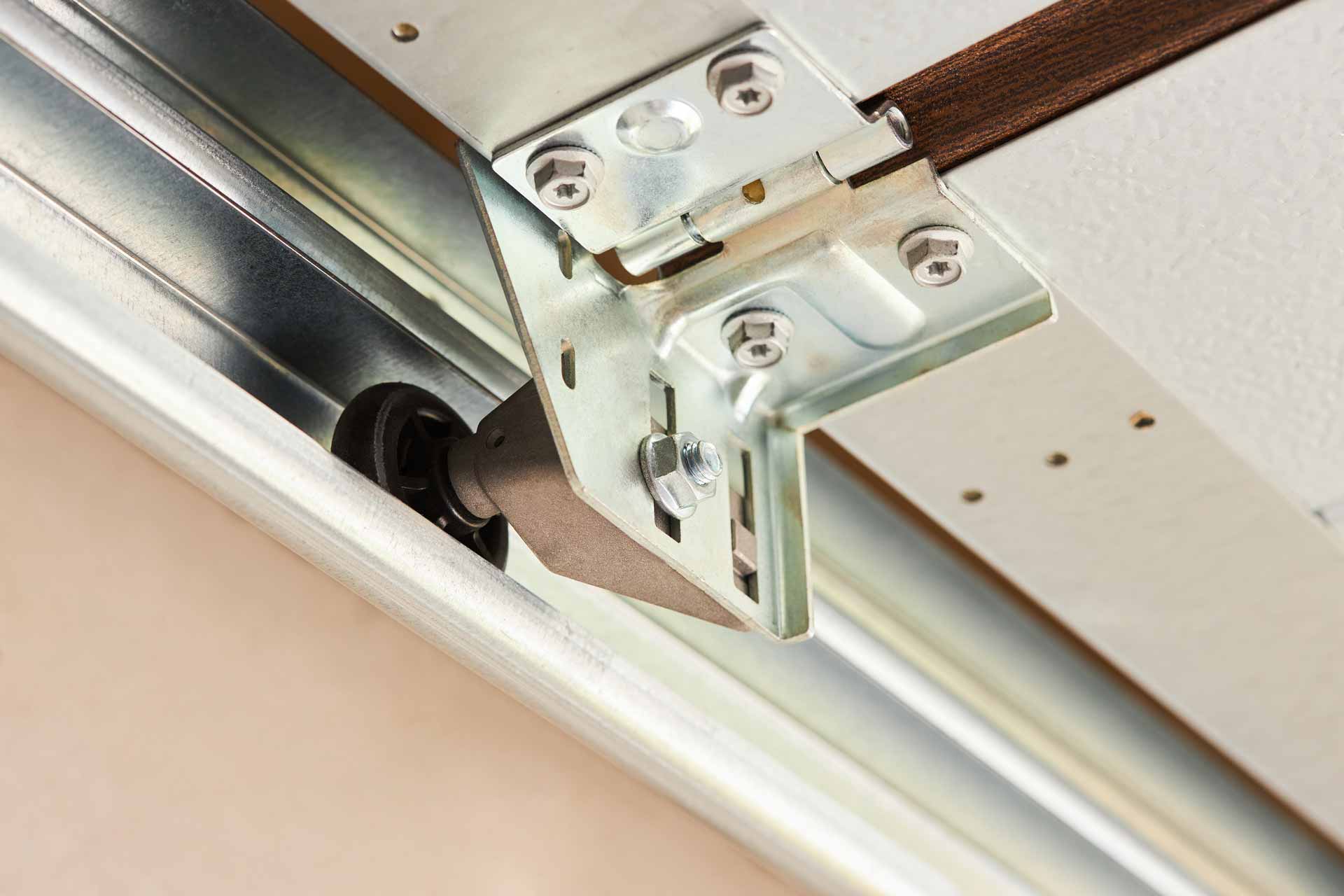Overhead garage doors are an excellent addition to your home. They help protect your vehicles and personal property, lock out thieves, and increase home security.
Ideally, your garage door will function seamlessly throughout the year. Over time, however, issues with the garage door tracks can cause problems. Here’s a look at some common garage door track issues and how to fix them.

How Garage Door Tracks Work
Most residential garage doors travel on metal tracks that rise up the face of the garage and then curve to run perpendicular to the ceiling. Typically, the vertical and horizontal portions each come in one continuous piece, while the curved portion connects the two.
These tracks provide a channel for the garage door rollers that guide the door up and down. The tracks also help support the door as it opens and closes so that the motor, cables, and springs don’t have to bear its full weight.
Garage door tracks help ensure accurate door balance and alignment when they’re working correctly. They also facilitate a secure seal against the outside environment by keeping the door level when closed.
Common Garage Door Track Problems
Over time, numerous issues can affect your garage door tracks. These include:
- Lack of lubrication
- Dirt and debris buildup
- Misalignment
- Loose hardware
For optimal functioning, garage door tracks must be straight, clean, and well-lubricated to allow the rollers to travel smoothly up and down. If any one of these elements is missing, you may start to notice issues as you raise and lower the door, such as:
- Squeaking, squealing, or rattling sounds
- Shaking or juddering movements
- Uneven door panels
If any of these problems happen, it’s time to assess your garage door tracks and ensure they’re in good shape. Typically, you can do this yourself. If you’re unsure how to begin, you can always call your local garage door contractor for assistance.
Troubleshooting Garage Door Tracks
To assess and fix your garage door tracks, the first thing to do is consult your garage door manual. The manual will provide key information on proper safety measures, cleaning procedures, and lubricating options. You’ll also need a ladder and a strong light source to examine the track’s entire length.
Safety First
Next, follow the safety instructions from your manual. These will likely include:
- Disconnecting the power
- Assuring a clear work area
- Wearing appropriate protective gear such as goggles and work gloves
- Ensuring children, pets, and other residents stay clear of the garage
Once safety is taken care of, you can examine the tracks to identify any problems. Many issues will be easy to spot and address, so taking a good look is an essential first step.
Clear and Clean Your Tracks
Your tracks can always benefit from a thorough but gentle cleaning. You can vacuum the track channel to remove most debris, then wipe them down with a soft cloth to remove anything that remains.
If there is stubborn dirt or buildup, you can typically use a mild detergent to clean it off. Always follow the manufacturer’s instructions, though, to ensure what you use is safe for your tracks.
Address Track Alignment and Stability
If your tracks are bent, misaligned, or loose, fixing those problems can significantly improve performance. Keep in mind, though, that adjusting the tracks is one area where you’ll need to assess the severity of the situation before attempting any DIY repairs.
If there’s a minor issue that you feel comfortable handling, that’s great. If you’re not sure what to do or if there’s a serious issue, it may be better to call a professional garage door contractor so that you don’t make the problem worse.
If you proceed on your own, you can usually fix minor misalignments or damage by loosening the hardware holding the track in place, repositioning the track, and retightening the hardware. You can use a rubber mallet to gently make these adjustments or reshape small areas of damage as needed.
Remember that if you adjust one side, you’ll likely have to adjust the other side, too. Also, make sure you use a level to ensure that all parts of the track are straight. Track adjustment is not a job you can eyeball!
Tighten Loose Hardware
As you’re checking the tracks, keep an eye out for any loose hardware. If any brackets holding the tracks in place have too much give, the tracks are more likely to move around and cause short- and long-term issues. Tightening the hardware can reduce noise and prevent further misalignment and balance problems.
Lubricate for Smooth Operation
Once your tracks are clean and aligned, you can apply lubricant to help the rollers glide smoothly up and down. Check your owner’s manual to determine what type and amount of lubricant the manufacturer recommends.
Schedule Regular Maintenance Checks
Once your garage door tracks are in good shape, the final step is to schedule regular maintenance checks so that they stay that way. You should check your tracks and garage door every few months to ensure everything is working well. It’s also a good idea to schedule an annual maintenance appointment with a professional so that they can spot and address any issues before they cause major problems.
If you live in Heathsville or the area, call Easy Open Garage Door, LLC, for help with your garage door tracks and all your overhead door installation, maintenance, and repair needs. We offer outstanding customer care, prompt service, and quality workmanship so you can use and enjoy your garage door without worry. With over 32 years of experience, our team is familiar with the full range of garage door makes and models, and we’re here to address all your garage door needs. Easy Open Garage Doors, LLC—Because Life Is Hard Enough!

